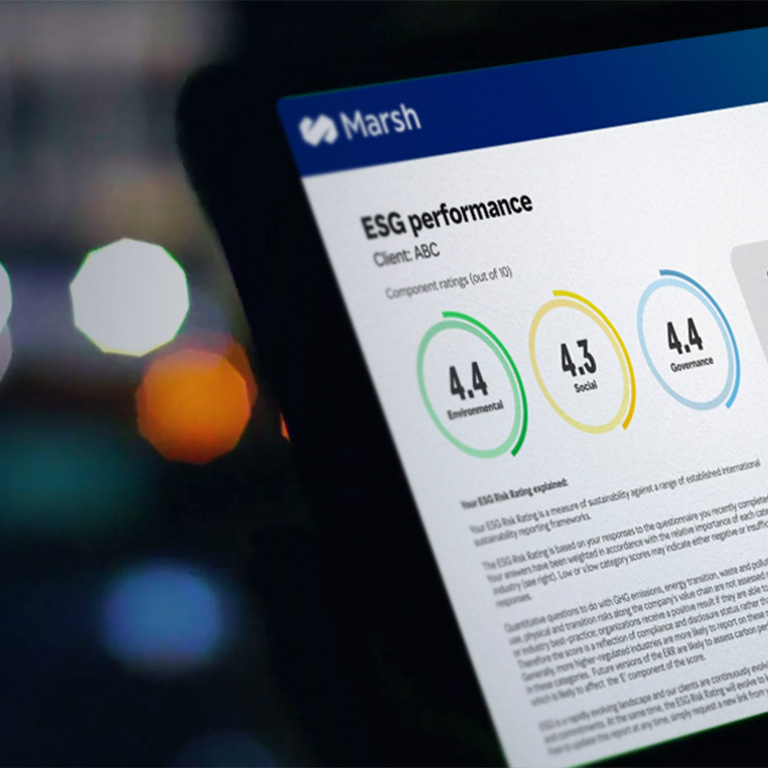
By Edward Farrelly ,
Senior Vice President, Asia Real Estate Industry Lead
23/03/2022
Climate action failure and extreme weather are regarded as the two most severe risks over the next decade in the Global Risks Report 2022, although these are often viewed as long-term issues in Real Estate, with no immediate owner. In the report’s survey, only about a quarter of respondents saw climate action failure as a critical threat in the next two years, but that number rose to over 40% of respondents over a five- to ten-year period, which is well within the real estate investment horizon.
The destructive impact of extreme weather is increasingly apparent in Asia. Weather events such as Super Typhoon Rai and the rise in the frequency of flash floods caused significant property damage across the Southeast Asia region in 2021. Insurers are recognising the increasing frequency and severity of these threats and are adjusting insurance premiums upwards to compensate, which results in financial challenges for property owners. As a result, Marsh’s risk engineers are reporting a greater mandate — from property owners and managers - to implement loss control measures, to reduce the frequency and intensity of losses from extreme weather.
One thing is clear: Our observations and data signal an urgent need for real estate asset owners and investors to sharpen their focus on environmental risk management practices and review existing risk management frameworks.
To comprehensively embed risk management within real estate strategy, property owners and developers should implement risk mitigation measures to supplement their risk transfer solutions at the earliest opportunity during a project.
Prior to the site selection, natural catastrophe (CAT) models and flood plans can help gauge the adequacy of locations. Property developers can further de-risk an investment before development begins through a climate and sustainability risk management review.
For completed assets, a risk consulting survey can identify and evaluate property and business interruption risks to facilitate the development of real estate risk management solutions.
In addition, property owners can use benchmarking to evaluate and adjust their coverage limits and manage their risk management costs. Doing so helps to open up different avenues of risk transfer, such as parametric insurance, which could provide a better response to predefined extreme weather events.
Ultimately, property owners need to either mitigate or transfer the risks identified to ensure returns are risk-adjusted. Regularly updated asset valuations (i.e. replacement cost), right-sized insurance sub-limits, and a review of business interruption (BI) values are just some elements of risk finance optimisation that they should consider. These actions can reduce the frequency and intensity of losses, and provide additional comfort to insurance underwriters by demonstrating that a proactive approach to risk management is being taken.
In real estate, the approach to environmental sustainability in Asia has changed dramatically from a box-checking marketing exercise to an embedded, longer-term strategy. Sustainability simply makes sound economic and financial sense. Green buildings are not only in-demand by tenants; they can also command a 10% rental premium with possibly up to 50% basis point (BPS) lower capitalization rates hence boosting the capital values of the property.
A good example is the adoption of green certifications such as LEED, which tenants increasingly regard as a pre-requisite to possible occupation, which is accelerating as the financial benefits of doing so become more measurable.
It is thus vital for property owners to consider securing adequate coverage at an affordable price in order to maximize the risk management benefits of their property in the long run.
There is also a significant benefit in ensuring sustainability in real estate as it can help adhere to compliance requirements such as the Task Force on Climate-Related Financial Disclosures (TCFD). Green buildings can comply with the TCFD framework to help public companies and establish organizations to disclose their climate-related risk and opportunities to the benefit of their stakeholders
The benefits of a sustainability approach go beyond mere dollars and cents: A sustainable real estate footprint and improved wellness and social offerings can enhance attraction and retention of talent. Studies by Mercer show that employers with higher ESG performance have a more attractive image among younger talents. Moreover, companies with ESG performance included among key performance indicators (KPIs) have been proven to show stronger revenue growth than their peers.
Real estate has made significant progress towards building resilience at both the enterprise and asset levels. However, considering the evolving risk landscape and the escalation of risks such as extreme weather conditions, property owners should consider taking a more proactive stance towards their formal risk management framework. Having this in place not only ensures adequate protection against possible short-term events, but also means that longer-term issues are well-addressed.

Article
22/03/2022
Senior Vice President, Asia Real Estate Industry Lead